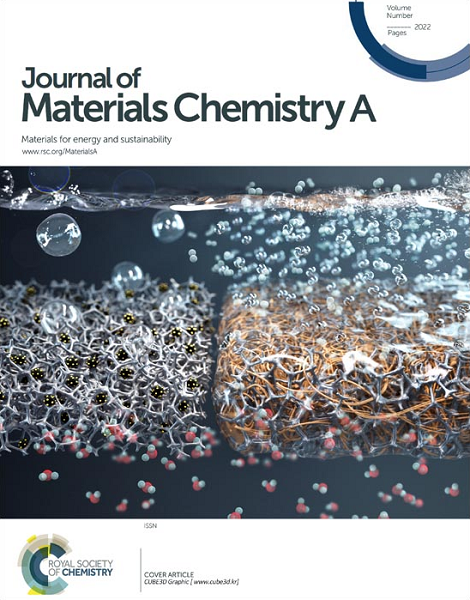Graphene-Templated Hybrid Prussian Blue-MXene Nanocomposites for Broadband Photodetection with Ultra-High Carrier Generation
IF 9.5
2区 材料科学
Q1 CHEMISTRY, PHYSICAL
引用次数: 0
Abstract
A graphene template provides a unique opportunity to combine nanomaterial building blocks on its surface for versatile optoelectronic applications. Herein, a low-cost, facile, and non-toxic nanocomposite of 2D metallic MXene (MX) and Prussian blue (PB) on a graphene template is reported. The MX nanosheets are exfoliated from the MAX phase via HF etching and are decorated with semiconducting PB by using a novel one-step in-situ method. This conjugation effectively anchors PB to MX, thereby enhancing the light absorption and providing a significant 19-fold increase in fluorescence quenching due to direct charge transfer. The PB@MX nanocomposite is then coated onto the graphene template to fabricate a heterostructured photodetector (PD) that exhibits enhanced photocurrent and highly sensitive broadband photodetection across the 325−808 nm range. The nanocomposite-based PD exhibits a remarkable photocurrent of 47.97 µA, a high photoresponsivity of 14,880 A W−1, a detectivity of 3.72 × 1012 cm Hz–1/2 W–1, and a normalized gain of 4.15 × 10−4 m2 V−1 under 450 nm illumination at 31.84 µW cm−2 and 1 V. These values represent the best performance reported to date for this class of nanohybrids, thus highlighting the potential of this PD for real-world electronic applications.石墨烯模板化杂化普鲁士蓝- mxene纳米复合材料用于超高载流子产生的宽带光探测
石墨烯模板提供了一个独特的机会,在其表面结合纳米材料构建块,用于多功能光电应用。本文报道了一种低成本、易操作、无毒的石墨烯模板上的二维金属MXene (MX)和普鲁士蓝(PB)纳米复合材料。通过HF蚀刻将MX纳米片从MAX相剥离,并采用一种新的一步原位方法进行半导体PB修饰。这种结合有效地将PB锚定在MX上,从而增强了光吸收,并提供了19倍的荧光猝灭,这是由于直接电荷转移。然后将PB@MX纳米复合材料涂覆在石墨烯模板上,制成异质结构光探测器(PD),该探测器在325 - 808 nm范围内具有增强的光电流和高灵敏度的宽带光探测。在450nm、31.84µW cm−2和1 V的光照下,该纳米复合材料PD具有47.97µa的光电流、14880µa W−1的高光响应性、3.72 × 1012 cm Hz-1/2 W - 1的检出率和4.15 × 10−4 m2 V−1的归一化增益。这些值代表了迄今为止这类纳米杂化材料的最佳性能,从而突出了这种PD在实际电子应用中的潜力。
本文章由计算机程序翻译,如有差异,请以英文原文为准。
求助全文
约1分钟内获得全文
求助全文
来源期刊

Journal of Materials Chemistry A
CHEMISTRY, PHYSICAL-ENERGY & FUELS
CiteScore
19.50
自引率
5.00%
发文量
1892
审稿时长
1.5 months
期刊介绍:
The Journal of Materials Chemistry A, B & C covers a wide range of high-quality studies in the field of materials chemistry, with each section focusing on specific applications of the materials studied. Journal of Materials Chemistry A emphasizes applications in energy and sustainability, including topics such as artificial photosynthesis, batteries, and fuel cells. Journal of Materials Chemistry B focuses on applications in biology and medicine, while Journal of Materials Chemistry C covers applications in optical, magnetic, and electronic devices. Example topic areas within the scope of Journal of Materials Chemistry A include catalysis, green/sustainable materials, sensors, and water treatment, among others.
 求助内容:
求助内容: 应助结果提醒方式:
应助结果提醒方式:


